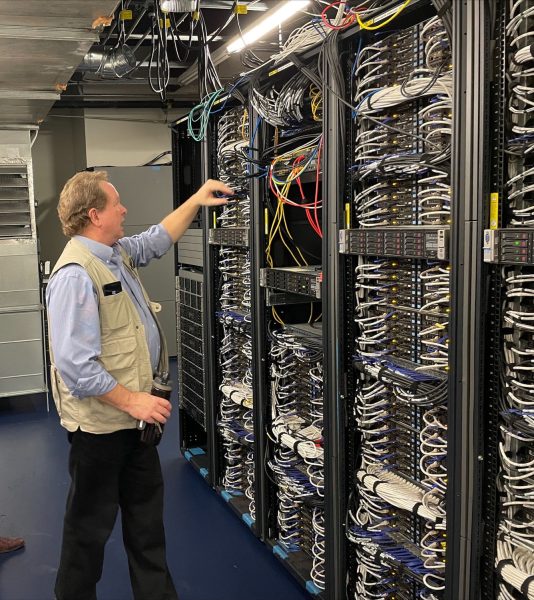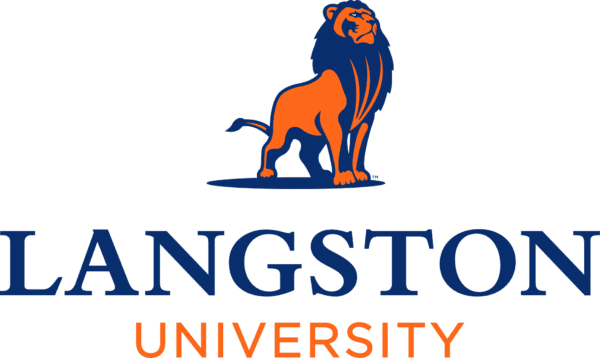Grant Award Accelerates Learning and Expands Creativity at Oral Roberts University
A National Science Foundation grant award is accelerating learning and expanding creativity at Oral Roberts University. In May 2022, ORU received $431,382 in funding to expand its GPU (graphics processing unit) capacity in support of research, education and student success. They are already reaping the benefits of the project.
“Students have accelerated their efforts and increased the variety of approaches in their work. This means that they are expanding their creativity. The student’s experience will be greater, thus better positioning them for Data Science opportunities upon graduation,” said Stephen Wheat, professor of Computer Science and director of the ORU Advanced Research Computing and Analytics facility.
“For the training aspects, the Data Science and AI classes have incorporated more hands-on activities, as the tools support increased simultaneous use of the system. This is definitely where success breeds success.”
Titan & Eli
 ORU deployed new GPU-based servers that they named Eli. Eli is integrated with Titan, their campus supercomputer. The GPUs accelerate campus computing and free previously used resources to other applications. Eli provides new researchers and faculty the motivation to embrace high-performance computing (HPC). ORU has extended the resources to higher education campuses across Oklahoma.
ORU deployed new GPU-based servers that they named Eli. Eli is integrated with Titan, their campus supercomputer. The GPUs accelerate campus computing and free previously used resources to other applications. Eli provides new researchers and faculty the motivation to embrace high-performance computing (HPC). ORU has extended the resources to higher education campuses across Oklahoma.
“Titan and Eli are freely available for use by all Oklahoma academic institutions. The ORCA management team actively evangelizes HPC to potential researchers and provides opportunities for substantial undergraduate research experiences,” Wheat said. “Success is measured by system utilization, availability, and increased researcher participation.”
The expanded computing resources are supporting a variety of initiatives at ORU:
- Student success studies using fitness activities, sleep patterns, and grade information to better coach students on optimizing their scheduling and study habits
- Analysis for the international IceCube project that observes the cosmos from deep within the South Pole
- Models to identify the dissatisfaction of congregants to make it possible to intercept and better meet the needs of church members before they leave a church
- Application of Biblical financial responsibilities and principles in financial events, such as mortgages
- Assessing correlation clusters in myriad data sets with visualization to improve understanding of patterns in the data
- Identifying distinctives in the human genome and comparing them to other species, such as Bonobo
Equipment Deployment
When ORU first received the new equipment, it was put into service within two weeks. Installing the systems into the racks was a great experience for ORU’s students.
“The storage has been great. Rock solid. It gave us the flexibility that we needed to support the variety of jobs that needed to be done,” Wheat said. “We’ve well-exceeded the capacity of the prior storage solution.”
Oklahoma Research Computing
The project aligns with the NSF-funded OneOklahoma Friction Free Network, a Science DMZ that connects many of Oklahoma’s academic institutions to high-speed data transfer capabilities and supercomputing resources across the state.
Two other Oklahoma institutions are currently working on NSF-funded grant projects to expand research computing in the state.
The University of Oklahoma is deploying a large-scale Artificial Intelligence/Machine Learning computer system to pursue AI/ML-based research and education. The system is a statewide resource to support research and educational programming in STEM disciplines including, trustworthy AI in weather, climate and coastal oceanography, the ATLAS high-energy physics collaboration, smoking cessation, bioinformatics and medical physics imaging, human brain signals, mobile network design, reservoir rock typing, natural language processing, and quasar feedback.
Langston University is implementing an HPC cluster to support computing-intensive research. The new cluster supports training across a wide range of disciplines and is available to researchers across Oklahoma. LU aims to increase the use of advanced computing for STEM research and education on its campus, the only Historically Black College and University (HBCU) in the region. The project will also contribute to workforce development for professionals working in cyberinfrastructure.
“Oklahoma’s higher education institutions have done a great job of leveraging NSF funding to expand research computing for researchers, faculty and students,” Brian Burkhart, OneNet’s chief technology officer, said. “ORU, OU and LU have led these efforts and continue to spur innovation across the state.”



